Anomaly detection: using AI to identify, prioritise and resolve network issues
Anomaly detection: Amr Ashraf shares insights into how the INOS probe uses AI to identify, prioritise and resolve network issues.

Anomaly detection: efficiently identifying and resolving issues across mobile networks is vital for the success of any CSP or MNO. With 5G network deployment ramping up, and beyond that, work towards autonomous networks, the use of AI to handle anomalies is vital. In this article, Amr Ashraf, RAN and Software Solution Architect and Trainer, describes how CSPs can more efficiently identify and resolve the real issues hidden amongst all the noise.
This article is also available as a stand-alone paper, here.
Identifying the real issues hiding in all the noise
Data volumes are only going in one direction – there are substantial increases in data volume as more people connect online, with more devices, more solutions move to the cloud, continued changes in customer behaviour and movement of people and information across society, and more and more daily interactions move online. This increased volume of data also provides far greater noise for cyber threats to hide within. Whilst networks continue to perform well, and meet demand, efficient use of resources will become ever more important.
New tools and approaches are needed to be able to identify and resolve issues in all the noise.

Anomaly detection and resolution: the role of AI
AI and ML provide the vital tools to handle this ever-growing volume of data. Soon – if not already – there will simply be too much data to analyse everything – but we can use AI to identify the unusual issues and outliers, and dig deeper into these anomalies.
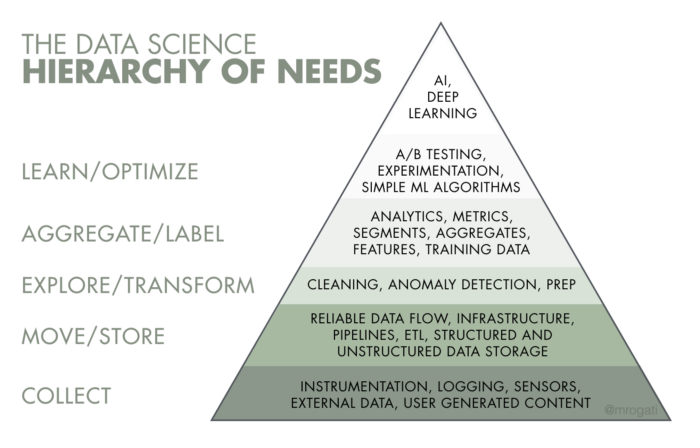
The AI Hierarchy of Needs, Monica Rogati 2017
“How do we use AI and machine learning to get better at what we do?”. M.Rogati placed anomaly detection as a vital transformational step in providing a solid foundation for data before being effective with AI and ML.

Digis Squared & anomaly detection
Digis Squared’s INOS AI tool is a vendor-agnostic, multi-network-technology solution delivering automated assessment, testing and optimisation of networks, across all technologies. The data collected by INOS is analysed in the cloud-based AI engine, and it is here where anomalies are detected, assessed and actioned.
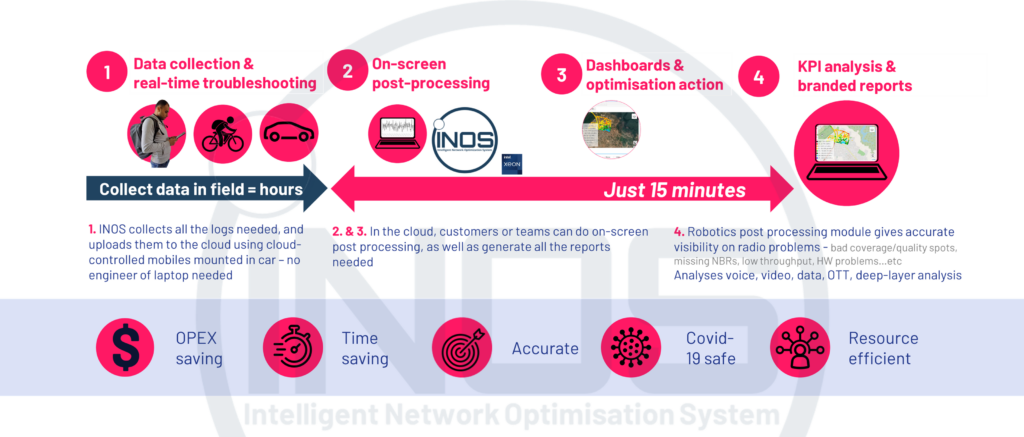
INOS: Three data collection methods
“INOS collects data in the field by one of three methods – a traditional “suitcase” format for drive testing, or a highly mobile backpack which can be used in narrow streets, or walking through shopping malls for example,” explains Amr Ashraf, RAN and Software Solution Architect and Trainer. “And this paper focusses on the third method, the static INOS active probe, and how the data it collects is analysed and actioned.”
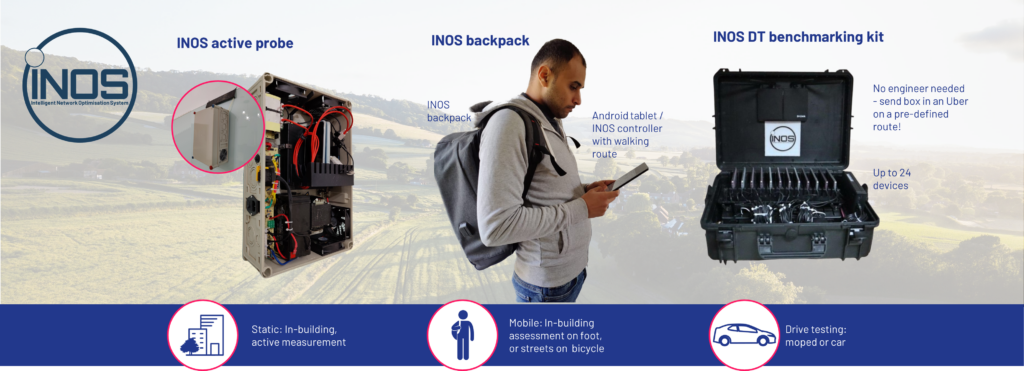
INOS active probe
“The active probe is a static box which is typically deployed inside a building – maybe a corporate HQ, a high-profile area within an airport, or a new business facility. Perhaps the location is selected because the CSP wants to proactively support a new VIP client, gather KPI data, or improve SLAs. Once deployed, the probe continuously monitors the networks, and data is streamed to the INOS platform in the cloud, where it is analysed by the INOS AI engine.”

“In the first step of the analysis, the data collected by the INOS active probe is used to identify QoE – the quality of experience – problems experienced by mobile devices in the probe. INOS will assess the data and carry out root-cause investigations to identify the fault that led to the problem. This is accomplished by gathering various performance measurements from several layers – the network, hardware, link, and operating system – which are then aggregated and delivered to INOS cloud.”
“To put it more specifically, the probe regularly initiates a test scenario while recording network, hardware, link, and OS measurements. Given that QoE problems can come from a variety of locations along the path, measuring the performance of each layer enables not only the detection of QoE problems, but also the determination of the problem’s root cause. A database on the INOS cloud receives aggregated metrics as soon as they are made available.”
Why use active probes?
“One of the best ways to understand how the end-user perceives the performance from beginning to end is using probes. They offer real-time and historical end-to-end call tracing, KPIs that continuously track network health and customer experience, and proactive alarming (QoE).”
“The two basic methods—probe measurements—that can improve performance and enrich end-to-end analysis (from the user terminal to the core network) are active and passive probe measurements, Because they give detailed information that enables service operators to assess the service quality across various transport technologies, probes play a significant role in the ever-increasing complexity of modern telecom networks.”
“By defining some parameters, the INOS probe uses AI models to detect anomalies in any field KPIs. For example, parameters such as deviation parentage and time windows can be used to calculate the deviation value. The example below for RSRP in LTE takes this approach, and identifies a deviation of 20%.”
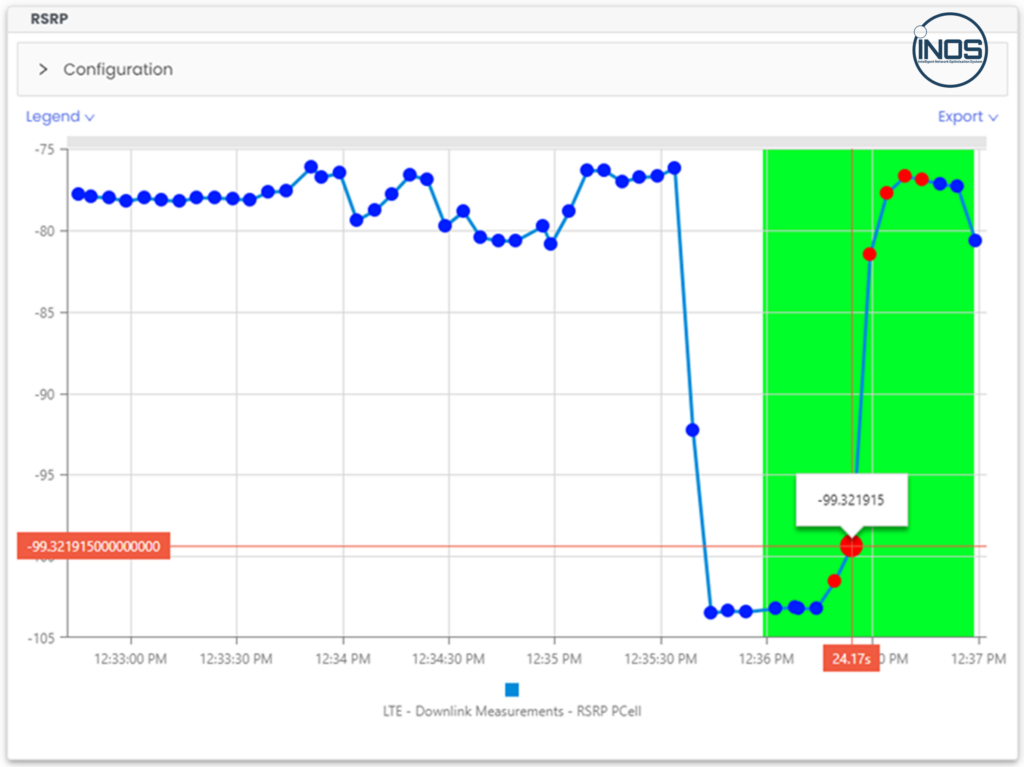
“Additionally, INOS is able to assess data from other channels, including WhatsApp, Telegram, Twitter and email, and can assess behaviour of those apps for network anomalies too.”
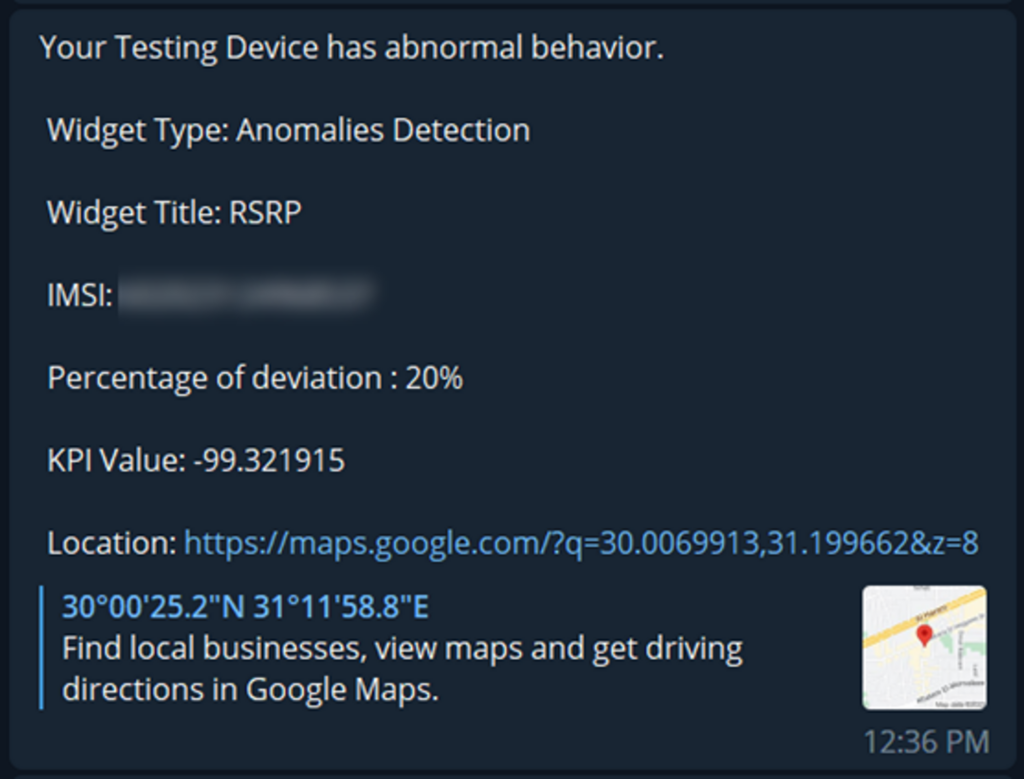
“To achieve the goal of end-to-end quality metrics, these probe measurements should be connected with numerous node-to-node performance data as well as customer data,” explains Amr.
“An integral view from the customer, network, service, or terminal perspective is provided by Digis Squared’s in-house developed INOS and RAI tools. Together these two AI-tools can proactively manage the network by continuously monitoring end-to-end KPIs, created from various perspectives in the network. They can immediately identify any deteriorating trends and anomalies, for example, dropped-call ratio and set-up times.”
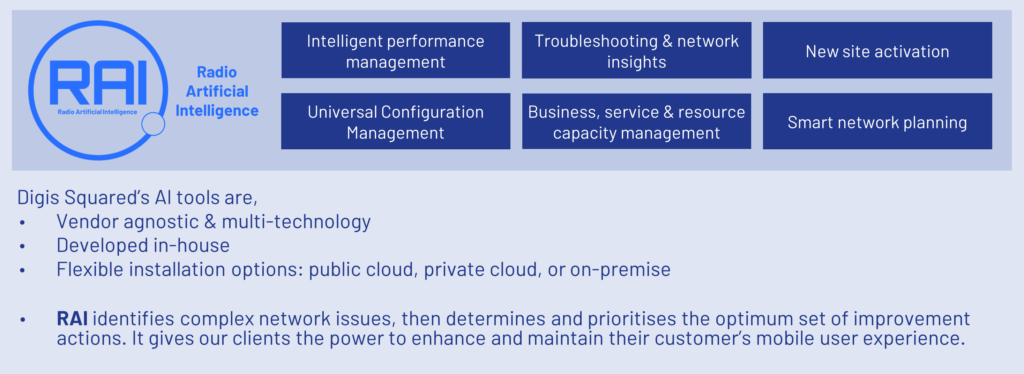
“All Digis Squared’s tools are vendor agnostic – networks are such a complex mix of solutions, that our tools simply have to be able to work with and analyse data from all vendors. And, of course, they also handle data from all network technologies, legacy 2G platforms through to 5G, they’re designed for all of this.”
Prioritization: counter-intuitive approaches are sometimes best
The costs and impacts associated with low and medium-severity anomalies may be far greater than the total cost of high-severity issues – smaller issues are often harder to detect, and take longer to identify and implement a fix, so their compounded cost can be higher. AI can help ensure counter-intuitive approaches to assessing priority can be handled without bias.
“A proactive approach can save money in addition to ensuring high levels of customer satisfaction by reducing the number of trouble tickets and so optimizing resource allocation. The pre-defined INOS reports’ ability to show service quality makes root-cause investigation possible across all network layers.”
“Today, the Digis Squared AI tools are able to continuously receive data from active probes in the network, identify anomalies and negative trends. They are also able to identify root cause, and propose recommended solutions to fix the issue. Working with our clients, in some installations we enable those recommended fixes to be automatically implemented, ensuring that frequently occurring minor issues are identified and resolved automatically. Of course, all issues are included in reporting. This approach ensures that staff do not need to intervene in the mundane, predictable issues, and can instead focus on assessing the recommendations the system makes for more complex issues.”
Anomaly handling and autonomous networks
The use of AI in anomaly detection and, critically, resolution, has great value for legacy technologies, and even greater value for new technologies and transformations. It’s a vital step in network function virtualization (NFV), cloud-native computing (CNC) and software-defined networking (SDN) technologies. And provides important preparation for CSPs as they ready their organizations for operations based on autonomous networks.
“The Digis Squared INOS active probes are a vital tool in providing high-quality data on background network behaviour and performance,” shared Amr. “Using this, our AI tools are able to continuously assess the streamed data and identify anomalies, assess their root cause, and then propose and implement recommended actions. AI solutions like this will soon be the only way in which CSPs can efficiently identify and resolve the real issues hidden amongst all the vast quantities of noise.”
Find out more about INOS
INOS can be implemented as a public or private cloud, or on-premise solution, and is also available as a “Radio Testing as-a-service” model. Its extensive AI analysis and remote OTA capabilities ensure speedy and accurate assessment of all aspects of network testing: SSV, in-building and drive testing, network optimization and competitor benchmarking, across all vendors, network capabilities and technologies, including 5G, private networks and OpenRAN.
INOS is built with compute resources powered by Intel® Xeon® Scalable Processors. Digis Squared is a Partner within the Intel Network Builders ecosystem program, and a member of the Intel Partner Alliance.
In conversation with Amr Ashraf, Digis Squared’s RAN and Software Solution Architect and Trainer.
If you or your team would like to discover more about our capabilities, please get in touch: use this link or email hello@DigisSquared.com
Discover more
- Product update: “Radio Testing as a Service” – successful cloud-based INOS installation in Intel Lab
- Image credits: all images, as stated, and all others are copyright Digis Squared, except first image (abstract blue/silver shapes by Maximalfocus).
Digis Squared ◦ Enabling smarter networks.
